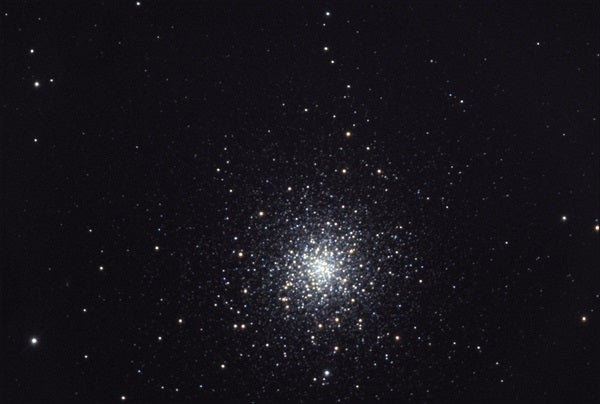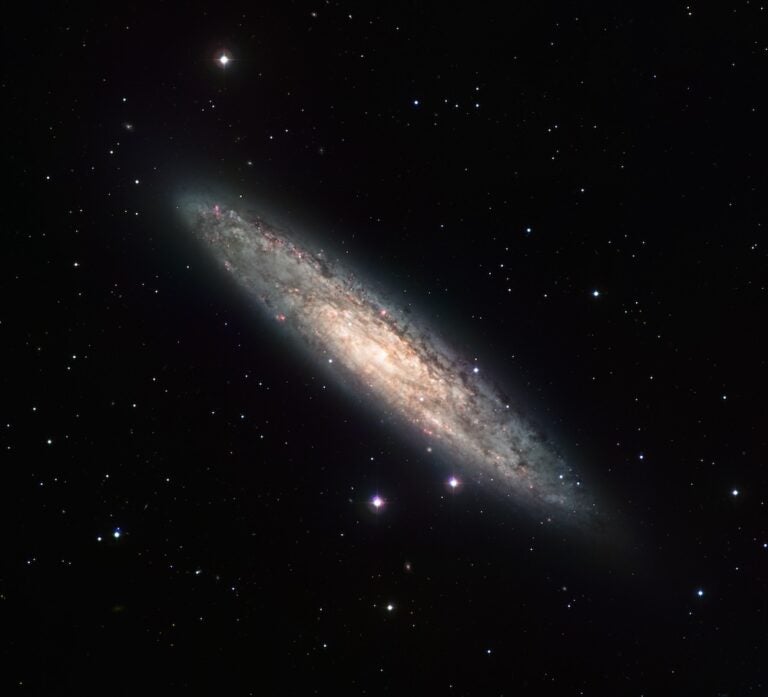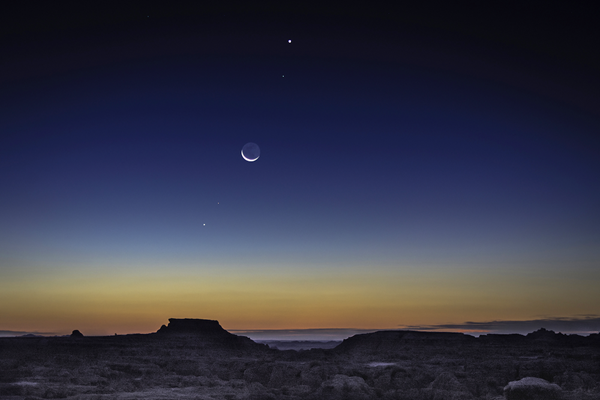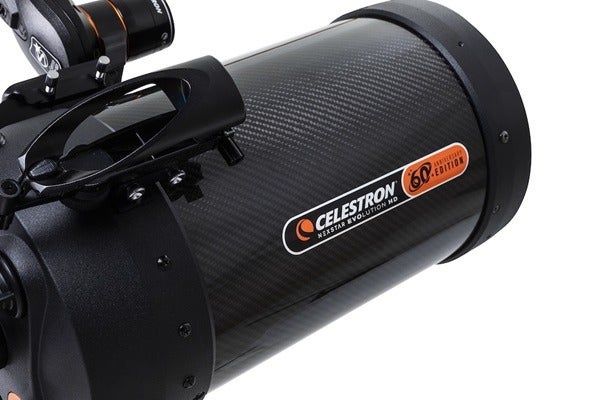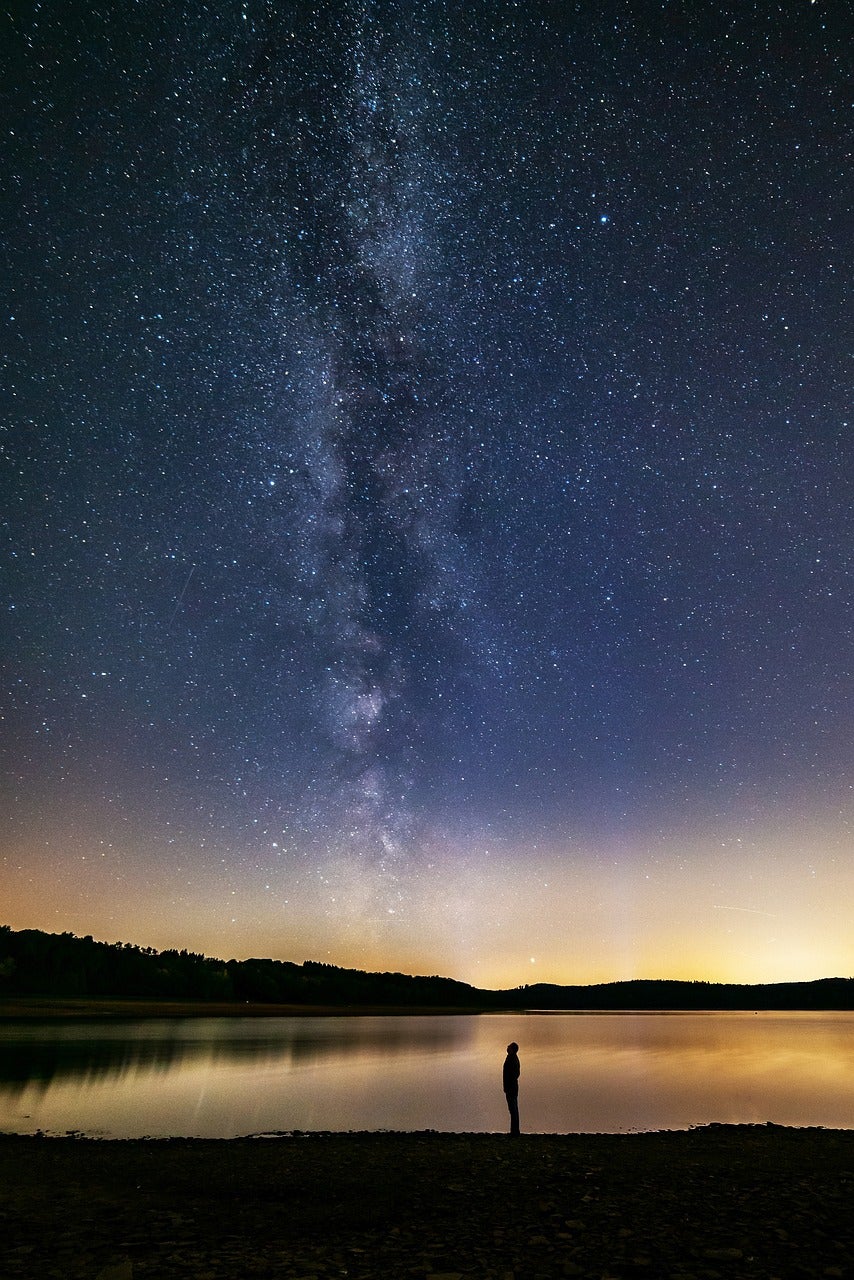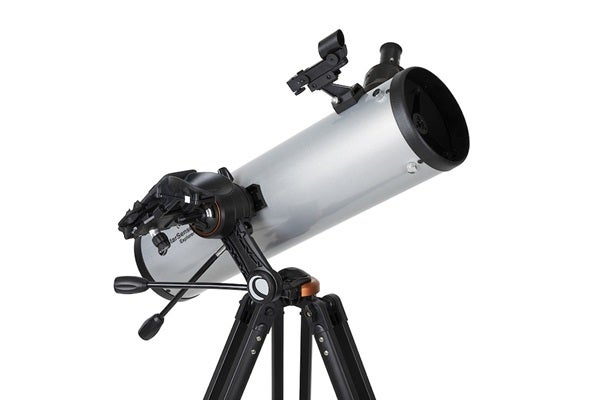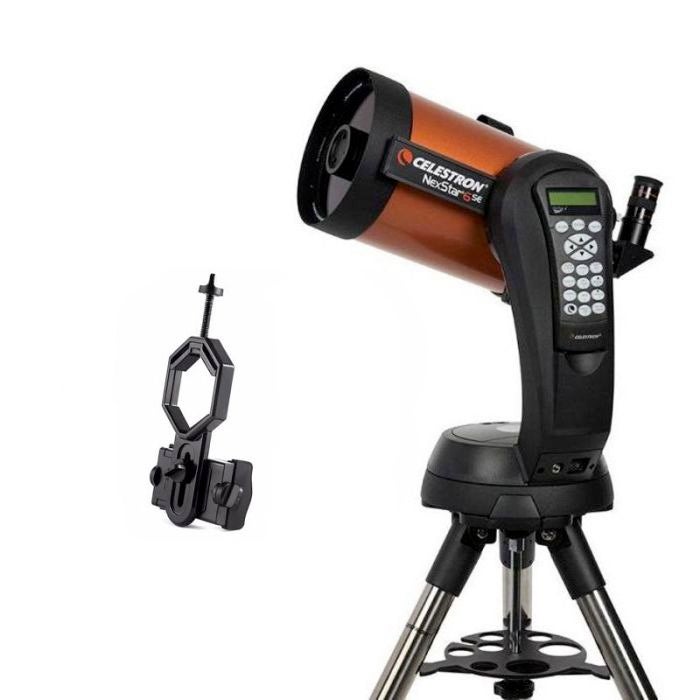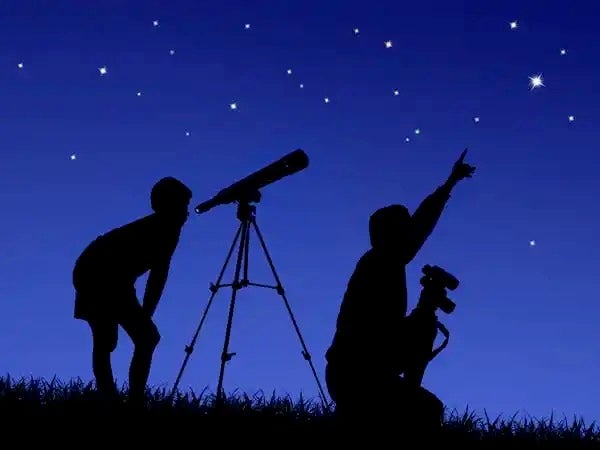South of Orion’s knees, marked by Rigel (Beta [β] Orionis) and Saiph (Kappa [κ] Orionis), are a half-dozen or so fainter stars that form the constellation Lepus the Hare.
Even though its brightest star shines no better than magnitude 2.6, Lepus is apparent in suburban backyards if there is a good view to the south. Directly below the imaginary line connecting Rigel and Saiph lie four of the Hare’s brightest stars, set in a distinctive trapezoid. Beginning at the northernmost of the four and moving clockwise, there’s Alpha (α), Beta (β), Gamma (γ), and Delta (δ) Leporis. All fit comfortably into a 7° field of view through binoculars.
Of the four, Gamma will immediately catch your eye. That’s because it has a friend, a 6th-magnitude star 97″ to its north. The 4th-magnitude star you see by eye alone is known as Gamma A, while its fainter companion is Gamma B. The Gamma system lies 29 light-years away, with the stars separated from each other by an estimated 870 astronomical units — where 1 astronomical unit, or AU, is the average distance between Earth and the Sun. Together, they create one of the most striking binocular binaries in the entire sky. Each is bright enough and separated far enough from the other that any binocular can resolve them. When I study them closely, Gamma A impresses me as yellow-white, although some report it as greenish. Gamma B is a subtle orange. Defocusing your binoculars slightly will help enhance the delicate colors.
Next, shift your attention diagonally across the Lepus trapezoid to Alpha Leporis, also known by the proper name Arneb. The Hare’s brightest star, Arneb is an F-type supergiant 1,300 light-years away. It makes the perfect jumping-off point to find an object in celestial limbo.
Glance 1.5° due east of Arneb. Can you make out a misty knot of four faint stars? That’s NGC 2017. Originally classified as an open cluster, we now know that NGC 2017 is an asterism that happens to also include the multiple-star system h3780. With most binoculars, we can see that the system’s brightest star, at 6th magnitude, is framed by a tight triad of 8th-magnitude attendants.
Lepus contains a single entry in Charles Messier’s famous catalog: M79, an out-of-the-way globular cluster. To find it, bunny-hop 3° from Arneb southwestward to Beta Leporis (also known by the proper name Nihal), and then repeat the leap, continuing in the same direction. Most globular clusters swarm around the center of our galaxy, placing them in our summer sky. But a few, like M79, lie in the opposite direction. M79 sits 60,000 light-years from the galactic center, about 10,000 light-years farther than our solar system. Some believe that this points to an extragalactic origin — that M79 was once affiliated with a tidally disrupted dwarf galaxy known as the Canis Major Dwarf.
Through binoculars, M79 appears much like Messier himself described it in December 1780, two months after his contemporary, Pierre Méchain, discovered it: “Nebula without a star; the center bright; the nebulosity a little diffuse.” In reality, of course, M79 is a spherical collection of about 100,000 stars. You will find this fuzzy little patch of light just northeast of a 5.5-magnitude star, SAO 170351.
Lastly, we come to a challenging treasure, the tiny but colorful planetary nebula IC 418, better known as the Spirograph Nebula (thanks to a famous image from the Hubble Space Telescope). I received a note last winter from reader Scott Harrington (no relation) reminding me just how bright this planetary nebula is, and yet how few of us have ever seen it. Although many sources list it as photographic magnitude 10.7, it appears much brighter by eye, bringing it well within the limits of most binoculars. IC 418 is sometimes called the Raspberry Nebula, for its prominent pinkish color through giant backyard telescopes. With most binoculars, however, it appears grayish, with possibly a blue or green tinge. Try it for yourself and let me know what you see.
Questions, comments, suggestions? Contact me through my website, philharrington.net. Until next month, remember that two eyes are better than one.

